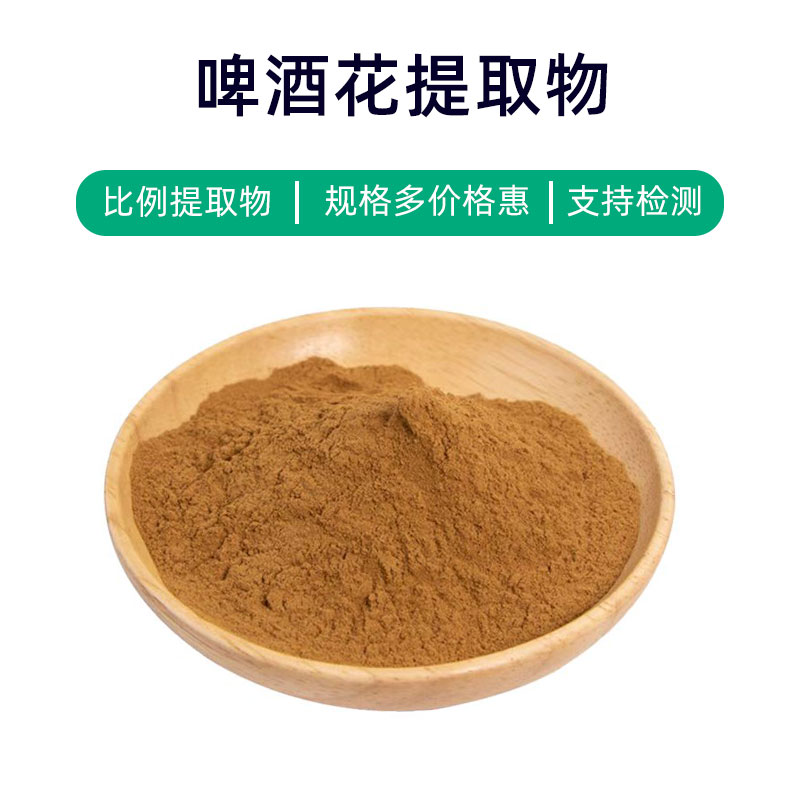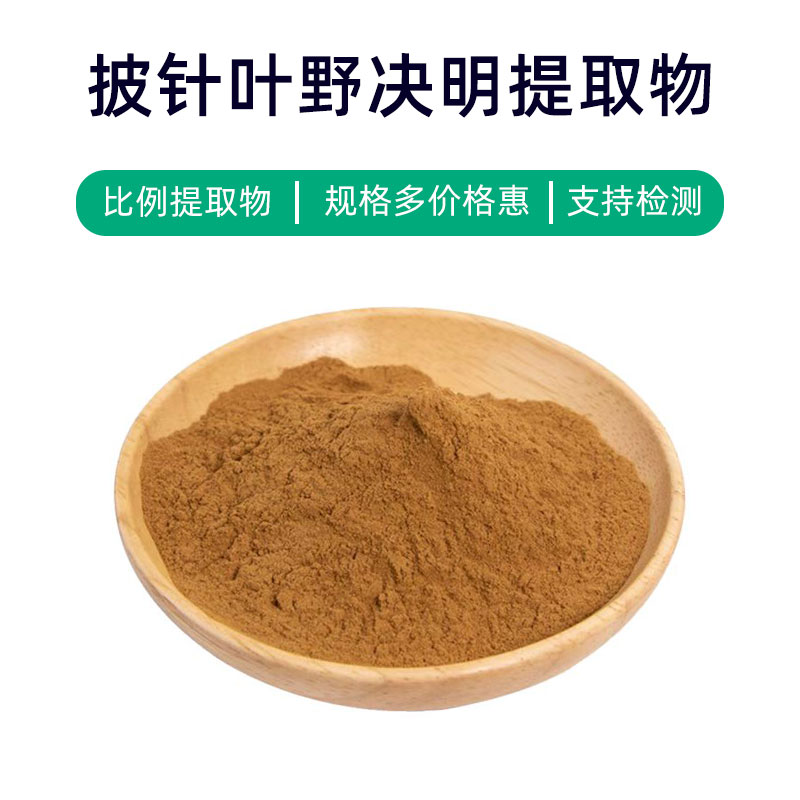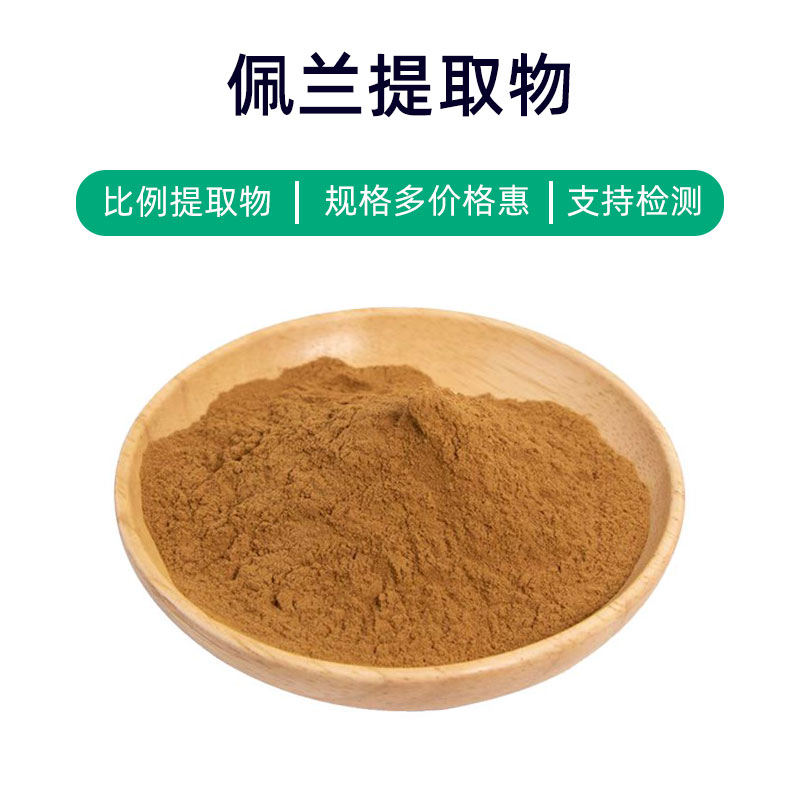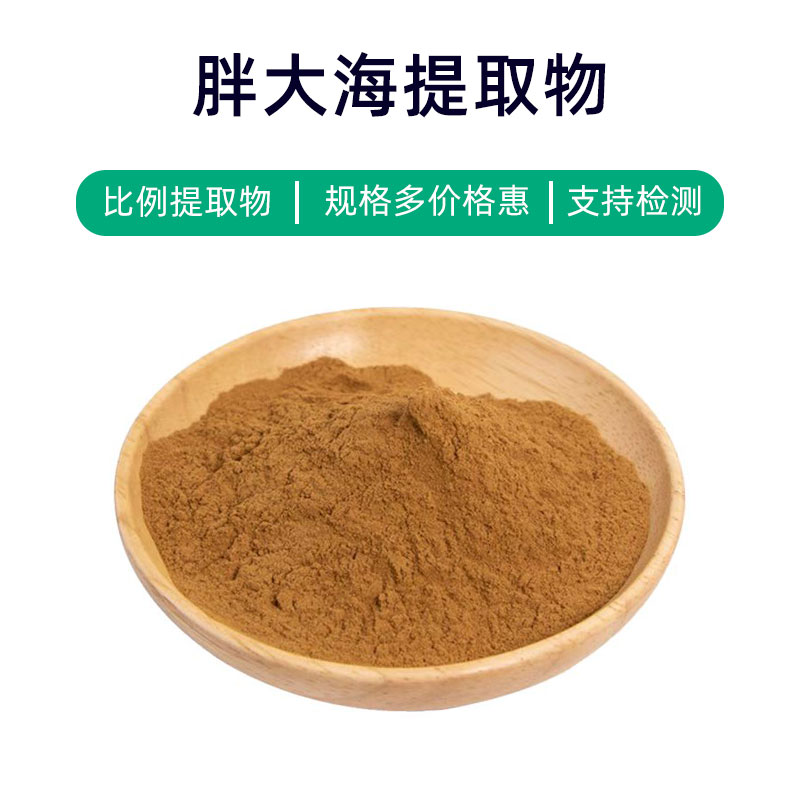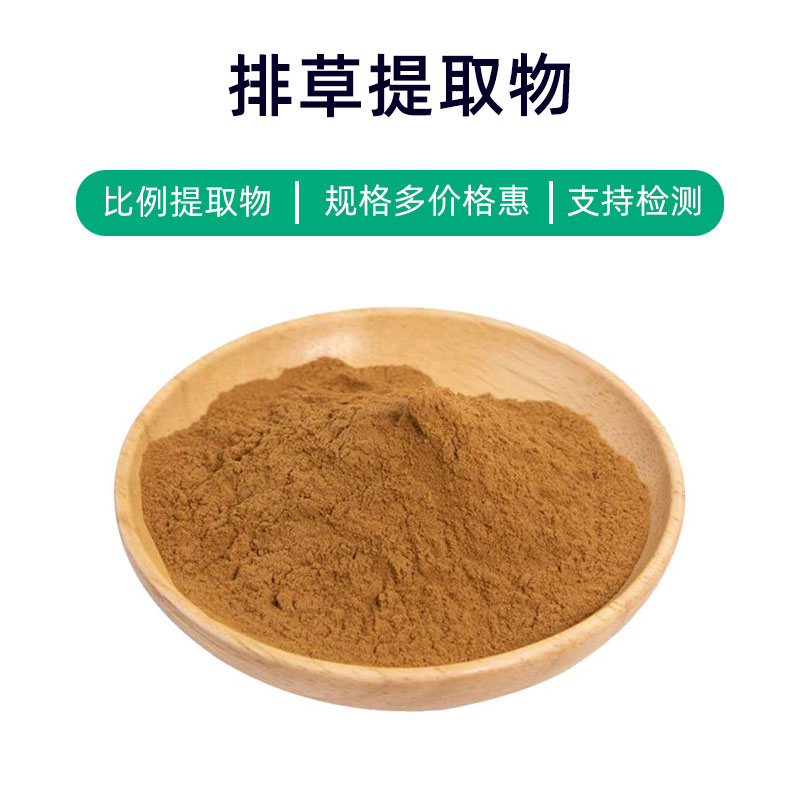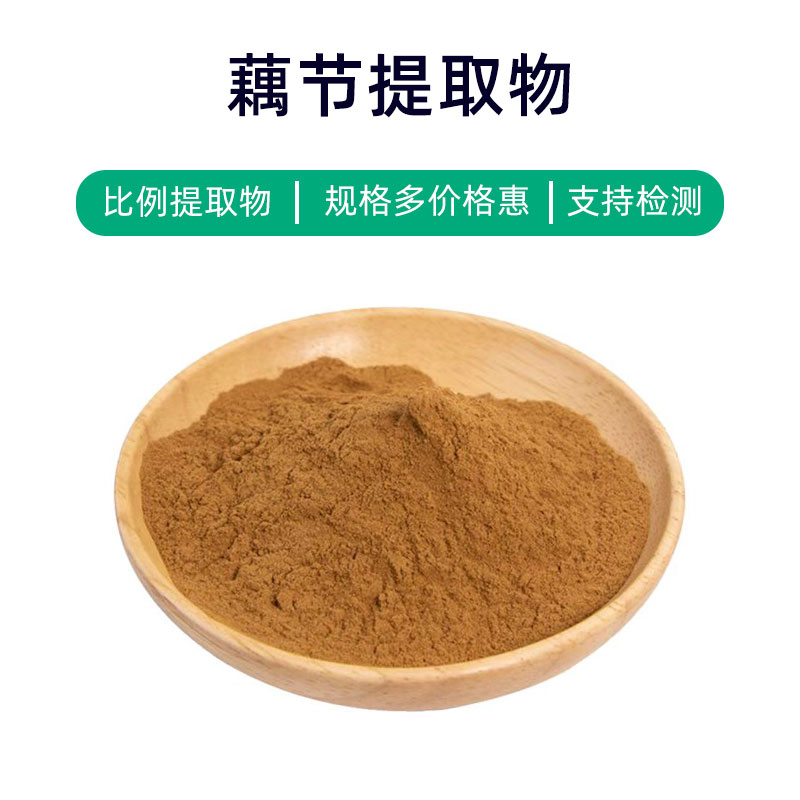Honeysuckle Extract Product Introduction
Honeysuckle extract is a natural plant extract derived from the flowers or leaves of honeysuckle (scientific name: Lonicera japonica). Its main components include honeysuckle glycosides, chlorophyll, volatile oils, and flavonoids. This extract has garnered significant attention due to its rich medicinal value.
In terms of efficacy, honeysuckle extract offers a variety of health benefits. First, it is widely used in the pharmaceutical field for heat-clearing, detoxifying, anti-inflammatory, and antibacterial purposes, helping to treat symptoms of colds and fevers. Additionally, it is commonly included in health supplements to boost immunity and provide antioxidant effects, thus enhancing the body's resistance to diseases. Furthermore, honeysuckle extract is important in cosmetics, often found in skincare products for its skin-soothing properties, reducing inflammation, and whitening effects.
The applications of honeysuckle extract are extensive, highlighting its importance across multiple fields. Whether as a medicinal ingredient or a valuable component in health supplements and cosmetics, honeysuckle extract showcases unique benefits and value.
Honeysuckle Extract Production Process
The production process of honeysuckle extract mainly includes the following steps:
- Raw Material Collection and Preparation: Fresh honeysuckle flowers or leaves are selected as extraction materials to ensure quality. Following collection, they undergo preliminary cleaning and processing to remove impurities.
- Extraction Process: The processed honeysuckle material is placed in extraction equipment, and an appropriate solvent (such as ethanol or water) is added for steeping. During steeping, temperature, time, and solvent concentration are controlled to ensure the extraction of effective components.
- Filtration and Concentration: The extraction liquid is filtered to remove solid particles and impurities, yielding a clear extract. Then, concentration equipment is used to evaporate the solvent from the extract, resulting in a concentrated extract.
- Precipitation and Separation: The concentrated extract undergoes precipitation treatment, using a precipitant to separate the target components. The precipitate and solution are then separated through centrifugation or filtration.
- Drying and Grinding: The separated precipitate is dried to remove remaining moisture, obtaining a dry extract. This is then ground into the desired particle size using grinding equipment.
- Packaging and Storage: Finally, the ground honeysuckle extract is packaged according to specifications, typically using moisture-proof and light-proof materials to maintain stability and purity. It is then stored in a dry, cool environment, avoiding direct sunlight and high temperatures to extend shelf life.
Following these production steps, high-quality honeysuckle extract is obtained, preserving its rich active components and providing a reliable raw material basis for subsequent product formulations.
Honeysuckle Extract Efficacy and Side Effects
Honeysuckle extract is a common herbal extract with various benefits, primarily including the following aspects:
- Anti-inflammatory Effects: Honeysuckle extract contains rich flavonoids, such as chlorogenic acid and quercetin, which have significant anti-inflammatory properties. It can inhibit the release of inflammatory mediators and reduce tissue inflammation, providing auxiliary treatment for diseases caused by infections and inflammation.
- Antiviral Effects: This extract exhibits inhibitory and killing effects against various viruses, particularly effective against influenza and respiratory viruses. The active components in the extract can interfere with the replication and spread of viruses, aiding in the prevention and treatment of viral infections.
- Immune Modulation: Honeysuckle extract can regulate the body's immune function, enhance resistance, and increase the activation of immune cells, helping improve the body's ability to resist external threats, thereby providing certain health benefits in preventing colds and influenza.
- Antioxidant Properties: The polyphenolic compounds in honeysuckle extract possess strong antioxidant activity, capable of scavenging free radicals, protecting cells from oxidative damage, and delaying cellular aging, thus contributing to skin health and reducing the risk of cardiovascular diseases.
- Antibacterial Effects: Honeysuckle extract inhibits and kills various bacteria and fungi, suitable for treating skin infections, oral ulcers, and more, and can also be used in food preservation and oral care products.
While honeysuckle extract has many benefits, individual differences and medication indications should be considered during use. Long-term or excessive use may lead to adverse reactions such as digestive issues or allergies; therefore, it is essential to follow medical advice, using the appropriate dosages and methods to ensure safety and efficacy.
Honeysuckle Extract Application Scenarios and Dosages
Honeysuckle extract has wide applications in pharmaceuticals, food, and cosmetics. Below are its uses and recommended dosages in various fields:
- Pharmaceuticals:
- Cold Remedies: Honeysuckle extract is often used as an ingredient in drugs for treating colds, flu, and other respiratory diseases. It is usually formulated into oral liquids or capsules, with adults typically taking 10 ml per dose, three times a day. Dosage for children should be adjusted based on age.
- Anti-inflammatory Ointments: Honeysuckle extract can also be made into topical ointments for treating skin inflammation, eczema, and heat rash. For external use, an appropriate amount is applied to the affected area 2-3 times daily.
- Injectables: It can also be formulated into injectables for treating severe infections. Injectable use must follow a doctor’s instructions and adhere strictly to medical advice.
- Food:
- Tea Beverages: Honeysuckle extract can be used to make herbal teas and cooling drinks that help clear heat and detoxify, refreshing and hydrating the body. Generally, 5-10 grams are used per serving, steeped for consumption.
- Honey Products: When mixed with honey, honeysuckle extract can create honeysuckle honey, offering soothing effects for the throat and alleviating cough. The dosage can be adjusted according to personal needs.
- Cosmetics:
- Skincare Products: Due to its rich flavonoids and antioxidant substances, honeysuckle extract is suitable for formulating skincare products. These can be prepared as masks, toners, and lotions, known for their skin-soothing and antioxidant properties. Usage instructions depend on specific products, generally recommended to follow product guidelines.
Applications of honeysuckle extract in pharmaceuticals, food, and cosmetics must adhere to product standards and usage instructions. If any discomfort or allergic reactions occur, usage should be discontinued immediately, and consultation with a doctor or professional is advised.
Honeysuckle Source Plant Introduction, Distribution, and Growth Environment
Honeysuckle (scientific name: Lonicera japonica Thunb.) is a common climbing shrub belonging to the Caprifoliaceae family, also referred to as honeysuckle flower or honeysuckle vine. Here’s an introduction to the source plant, its distribution, and growth environment:
Source Plant Introduction:
Honeysuckle is an evergreen or semi-evergreen climbing plant with long, flexible stems that can climb and entwine. Its leaves are opposite, oval, or ovate-lanceolate with pointed or blunt tips, smooth on the surface and hairy on the underside. The flowers are white or pale yellow, sometimes with a hint of purple, and the fruit is a blue-black berry.
Distribution:
Honeysuckle is native to China, mainly found in the mountainous and valley areas of southern China, including the Yangtze River basin, South China, and East China. Additionally, honeysuckle is widely cultivated around the world, including in Asia, Europe, and North America.
Growth Environment:
Honeysuckle prefers warm, moist environments and thrives in sunny, well-ventilated hillsides, valleys, riverbanks, scrublands, and forest edges. It is not demanding in terms of soil quality, favoring loose, fertile, well-drained soil, and is adaptable to both acidic and neutral soils. Honeysuckle is moderately cold-hardy but is not tolerant of dry or high-temperature conditions, which can lead to poor growth and susceptibility to pests and diseases.
Overall, honeysuckle is a highly adaptable plant with a broad natural distribution in southern China and is widely cultivated and introduced to other regions due to its ornamental and medicinal value.
Processing and Storage of Honeysuckle Extract
The processing and storage of honeysuckle extract are crucial for ensuring its quality and stability. The typical processing steps include harvesting, cleaning, drying, grinding, and extraction. First, honeysuckle should be harvested at the appropriate season to ensure the freshness of the plant. After harvesting, it should be thoroughly washed to remove impurities and surface dirt. Next, the flowers are dried to reduce moisture content, which helps inhibit the growth of mold and microorganisms. After drying, honeysuckle can be ground into powder or processed for extraction. The extract should be stored in a dry, cool, well-ventilated environment, avoiding direct sunlight and moisture to prevent oxidation and degradation. Proper packaging is also essential, opting for containers that are airtight to prevent contact with air and moisture. Correct processing and storage measures can extend the shelf life and stability of honeysuckle extract, ensuring its medicinal value and efficacy.
Monica Sun is a seasoned expert in the plant extraction industry with over a decade of experience in research and production. She specializes in the extraction and purification of plant active ingredients, focusing on driving innovation in natural product applications. Monica has participated in the development of multiple functional plant extracts, delivering high-value natural raw material solutions for the health food, pharmaceutical, and dietary supplement sectors.









